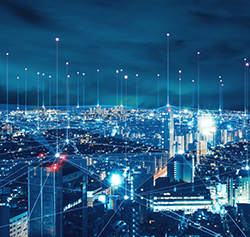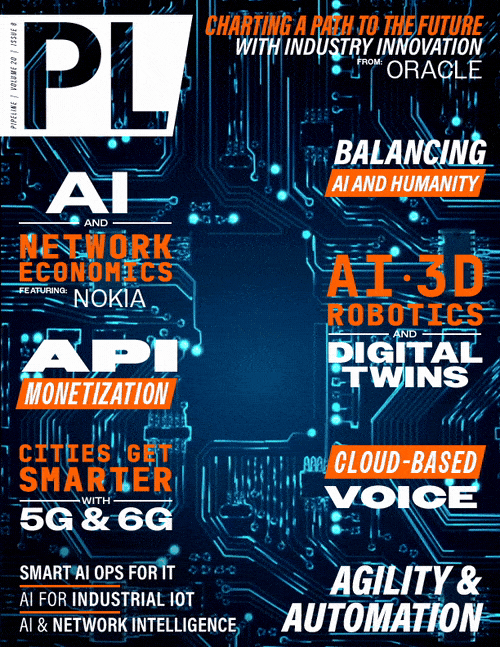5G and 6G: Smart Connectivity in the
City of the Future

From autonomous cars to unmanned drones and on-demand air taxis — the smart city of the future will enable individual mobility at all times. New concepts are already needed today. Concepts that must be able to monitor and control traffic flows in a comprehensive, autonomous, intelligent, and real-time manner. To realize such a future, not only are data-based solutions necessary, but also network infrastructures that can transmit data as close as possible to instantaneously, with as little latency as possible. Particularly with regard to autonomous driving, the smart city places high demands on low latency.
For context, a person’s reaction time can be 0.5 seconds. An autonomous driving stack needs almost super-human performance with significantly lower reaction times, with end-to-end latencies as low as 50 to 100 milliseconds for perception, planning, and driving functions. To move people and vehicles safely, quickly, and reliably through the mobility world of tomorrow, smart control systems must be able to recognize critical situations in advance and control autonomous traffic in real time.
Whether it's smart traffic control centers or clever applications that make cities cleaner, more livable, and more sustainable, services like these also enable new business models. Revenues in global smart cities markets are forecast to reach more than $72 billion in 2024, with Asian markets like Singapore currently in the lead. And the growth is set to continue, rising to over $100 billion worldwide by the end of the decade if the technological conditions are right. 5G is a good example of this. Already today, 5G enterprise IoT connections outpace consumer connections, and are expected to double by the end of the decade. With an estimated 1.6 billion connections in total in 2024, 5G is expected to become the dominant mobile technology by 2029, according to the data from the GSMA (Global System for Mobile Communications Association), but even then it will still only cover 56 percent of the world’s population.
Smart City with 5G: Sharing and Processing Data
As a complete technology stack, 5G offers numerous advantages over previous versions. For example, software-integrated functions can be linked, services can be virtualized, and edge networks can be operated. Data can be transmitted at speeds of up to 20 Gbit/s, and more reliably than with previous mobile phone technologies. Not only does 5G make better use of the available bandwidth than previous standards, but it also achieves a coverage density of up to one million devices per square kilometer. This improves mobile Internet coverage in a full football stadium or during an open-air event. In addition, 5G makes it possible to orchestrate many IoT devices to share and process data for smart city services — from smart garbage cans to real-time traffic control. No wonder some analysts estimate that the 5G IoT market will secure a CAGR of 31.1 percent from 2023 to 2033 and reach $55.1 billion by 2033.
Mobile communications also ensure smooth processes elsewhere. For example, cities can use digital 3D models to map construction sites in order to better plan, control, and document the work. Cameras and sensors transmit images and data to the construction teams. Similarly, 5G can be used to monitor the structural integrity of bridges to prevent collapses or, thanks to alarm systems, to respond quickly in an emergency. Connected garbage cans automatically report when they need to be emptied. Smart meters can be read remotely. And sensors also measure water consumption or air pollution. In public buildings, heating and air conditioning are controlled on the basis of the measured temperature and humidity, and ventilation on the basis of oxygen levels.
Real world examples include San Francisco, which deployed 1,000 IoT sensors for waste management, decreasing the city’s overflowing trash cans by 80 percent. In Colombia, the city of Cartagena uses a smart irrigation system for the efficient use of water. Not only does it monitor soil conditions to maintain the city’s parks and gardens, but it can also detect leaks in real time to avoid water wastage and, importantly, avoid puddles that can lead to soil erosion and the accumulation of mosquitos. Back in the States, Chicago’s Array of Things initiative has sensors across the city to monitor air quality, including sound and vibration. This data can be used to suggest the walking routes and times with the least pollution around this busy, futuristic metropolis.



















